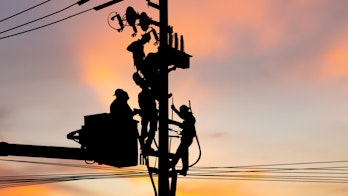Reports
-
- Clean Energy Transitions Programme (205)
- Technology Collaboration Programme (87)
- Clean Energy Transitions in Emerging Economies (53)
- EU4Energy (31)
- Digital Demand-Driven Electricity Networks Initiative (21)
- Energy Sub-Saharan Africa (15)
- Energy Efficiency in Emerging Economies (11)
- People-Centred Clean Energy Transitions (10)
- Electric Vehicles Initiative (9)
- CEM Hydrogen Initiative (8)
-
Breakthrough Agenda Report 2022
Accelerating sector transitions through stronger international collaboration
Default report — September 2022

-
Oil Market Report - September 2022
Fuel report — September 2022

-
Tracking Clean Energy Innovation in the Business Sector: An Overview
Default report — September 2022
-
Hungary 2022
Energy Policy Review
Country report — September 2022

-
World Energy Employment 2022
Default report — September 2022

-
Security of Clean Energy Transitions 2022
Default report — September 2022

-
An Energy Sector Roadmap to Net Zero Emissions in Indonesia
Country report — September 2022

-
Technology and Innovation Pathways for Zero-carbon-ready Buildings by 2030
A strategic vision from the IEA Technology Collaboration Programmes
Technology report — September 2022
-
By 2030 EVs represent more than 60% of vehicles sold globally, and require an adequate surge in chargers installed in buildings
Part of Technology and innovation pathways for zero-carbon-ready buildings by 2030
Technology report — September 2022
-
Residential behaviour changes lead to a reduction in heating and cooling energy use by 2030
Part of Technology and innovation pathways for zero-carbon-ready buildings by 2030
Technology report — September 2022
-
Targeting 100% LED lighting sales by 2025
Part of Technology and innovation pathways for zero-carbon-ready buildings by 2030
Technology report — September 2022
-
Solar thermal technologies deployed in around 400 million dwellings by 2030
Part of Technology and innovation pathways for zero-carbon-ready buildings by 2030
Technology report — September 2022
-
350 million building units connected to district energy networks by 2030, provide about 20% of space heating needs
Part of Technology and innovation pathways for zero-carbon-ready buildings by 2030
Technology report — September 2022
-
Solar PV and wind supply about 40% of building electricity use by 2030
Part of Technology and innovation pathways for zero-carbon-ready buildings by 2030
Technology report — September 2022
-
Approximately 100 million households rely on rooftop solar PV by 2030
Part of Technology and innovation pathways for zero-carbon-ready buildings by 2030
Technology report — September 2022
-
Installation of about 600 million heat pumps covering 20% of buildings heating needs required by 2030
Part of Technology and innovation pathways for zero-carbon-ready buildings by 2030
Technology report — September 2022
-
Renovation of near 20% of existing building stock to zero-carbon-ready by 2030 is ambitious but necessary
Part of Technology and innovation pathways for zero-carbon-ready buildings by 2030
Technology report — September 2022
-
All countries targeted for zero-carbon-ready codes for new buildings by 2030
Part of Technology and innovation pathways for zero-carbon-ready buildings by 2030
Technology report — September 2022
-
Understanding Gender Gaps in Wages, Employment and Career Trajectories in the Energy Sector
Report — 19 August 2022
-
Japan Oil Security Policy
Part of Oil Security Policy
report report — 18 August 2022
-
Japan Natural Gas Security Policy
Part of Natural Gas Security Policy
report report — 18 August 2022
-
Japan Electricity Security Policy
Part of Electricity Security Policy
report report — 18 August 2022
-
Lithuania Electricity Security Policy
Part of Electricity Security Policy
report report — 18 August 2022
-
Lithuania Oil Security Policy
Part of Oil Security Policy
report report — 18 August 2022